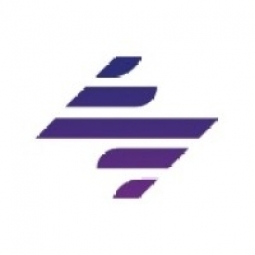下载PDF
Making Way for Cost Savings and Increased Efficiency
技术
- 应用基础设施与中间件 - 数据交换与集成
适用行业
- 运输
适用功能
- 物流运输
用例
- 车队管理
- 车载远程信息处理
服务
- 系统集成
- 数据科学服务
挑战
Summitt Trucking was facing several challenges with its previous trailer management solution. The hardware was unreliable and the cargo sensor readings were inaccurate. The company was also dissatisfied with the customer service provided by their previous telematics provider. The company was spending many hours troubleshooting without resolving the problem. In addition, they had to bear the shipping costs for returning the troubled units to the vendor. The company was also losing revenue as drivers had to spend time looking for empty trailers. The company estimated that it was losing about $500,000 or more annually due to this inefficiency.
关于客户
Summitt Trucking LLC is a family-owned and operated asset-based transportation & logistics company based in Clarksville, Indiana. The company transfers goods from shipper to receiver throughout the continental US. Summitt Trucking offers outstanding service and competitive pricing and aims to provide long-term partnerships with its customers. The company values every employee, from the office worker to the driver, and tailors its services to meet its customers' specific needs. The company was looking for a reliable trailer management solution that could help it sustain its long-term growth plans.
解决方案
Summitt Trucking partnered with Spireon for its trailer management needs. The company opted for Spireon’s solar-powered FL 22+ device, combined with its IntelliScan cargo sensor, which was the perfect solution for Summitt’s mix of dry van, reefer, and storage trailers. After a year of using Spireon’s trailer tracking solution, IntelliScan cargo sensor, and cloud-based UI to manage its mixed trailer fleet, Summitt Trucking minimized driver time and saved $500k in lost revenue. To further help with the chaotic nature of Summitt’s business, Spireon introduced Summitt to its Managed Services offering. Spireon's operations analyst helped Summitt with basic yard check reports and inactivity reports, filtering them in ways that made sense for Summitt’s operations. The analyst also helped Summitt tackle bigger challenges by customizing detention billing reports to adjust for special customer contract conditions.
运营影响
数量效益
相关案例.

Case Study
Airport SCADA Systems Improve Service Levels
Modern airports are one of the busiest environments on Earth and rely on process automation equipment to ensure service operators achieve their KPIs. Increasingly airport SCADA systems are being used to control all aspects of the operation and associated facilities. This is because unplanned system downtime can cost dearly, both in terms of reduced revenues and the associated loss of customer satisfaction due to inevitable travel inconvenience and disruption.

Case Study
IoT-based Fleet Intelligence Innovation
Speed to market is precious for DRVR, a rapidly growing start-up company. With a business model dependent on reliable mobile data, managers were spending their lives trying to negotiate data roaming deals with mobile network operators in different countries. And, even then, service quality was a constant concern.

Case Study
Digitize Railway with Deutsche Bahn
To reduce maintenance costs and delay-causing failures for Deutsche Bahn. They need manual measurements by a position measurement system based on custom-made MEMS sensor clusters, which allow autonomous and continuous monitoring with wireless data transmission and long battery. They were looking for data pre-processing solution in the sensor and machine learning algorithms in the cloud so as to detect critical wear.

Case Study
Cold Chain Transportation and Refrigerated Fleet Management System
1) Create a digital connected transportation solution to retrofit cold chain trailers with real-time tracking and controls. 2) Prevent multi-million dollar losses due to theft or spoilage. 3) Deliver a digital chain-of-custody solution for door to door load monitoring and security. 4) Provide a trusted multi-fleet solution in a single application with granular data and access controls.

Case Study
Vehicle Fleet Analytics
Organizations frequently implement a maintenance strategy for their fleets of vehicles using a combination of time and usage based maintenance schedules. While effective as a whole, time and usage based schedules do not take into account driving patterns, environmental factors, and sensors currently deployed within the vehicle measuring crank voltage, ignition voltage, and acceleration, all of which have a significant influence on the overall health of the vehicle.In a typical fleet, a large percentage of road calls are related to electrical failure, with battery failure being a common cause. Battery failures result in unmet service agreement levels and costly re-adjustment of scheduled to provide replacement vehicles. To reduce the impact of unplanned maintenance, the transportation logistics company was interested in a trial of C3 Vehicle Fleet Analytics.

Case Study
3M Gains Real-Time Insight with Cloud Solution
The company has a long track record of innovative technology solutions. For example, 3M helps its customers optimize parking operations by automating fee collection and other processes. To improve support for this rapidly expanding segment, 3M needed to automate its own data collection and reporting. The company had recently purchased the assets of parking, tolling, and automatic license plate reader businesses, and required better insight into these acquisitions. Chad Reed, Global Business Manager for 3M Parking Systems, says, “With thousands of installations across the world, we couldn’t keep track of our software and hardware deployments, which made it difficult to understand our market penetration.” 3M wanted a tracking application that sales staff could use to get real-time information about the type and location of 3M products in parking lots and garages. So that it could be used on-site with potential customers, the solution would have to provide access to data anytime, anywhere, and from an array of mobile devices. Jason Fox, Mobile Application Architect at 3M, upped the ante by volunteering to deliver the new app in one weekend. For Fox and his team, these requirements meant turning to the cloud instead of an on-premises datacenter. “My first thought was to go directly to the cloud because we needed to provide access not only to our salespeople, but to resellers who didn’t have access to our internal network,” says Fox. “The cloud just seemed like a logical choice.”





